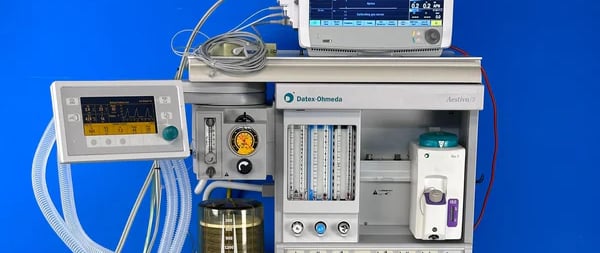Revolutionizing Patient Care: The Impact of New Anesthesia Ventilator Technologies
4/6/20252 min read


Introduction to Anesthesia Ventilators
Anesthesia ventilators are critical components in modern surgical procedures, designed to support patient breathing during anesthesia. The evolution of these devices has been substantial, particularly in recent years, as technology advances to enhance patient safety and surgical outcomes. This blog post delves into the recent innovations in ventilator technology and how they contribute to improving clinical practices.
Recent Innovations in Anesthesia Ventilator Technology
Recent advancements in anesthesia ventilators are marked by the incorporation of sophisticated technologies such as closed-loop systems, AI-powered algorithms, and enhanced monitoring capabilities. Closed-loop ventilation systems are particularly noteworthy, as they can automatically adjust the ventilatory support based on real-time patient data. This level of automation minimizes the risk of human error and allows anesthesiologists to focus on other critical aspects of patient care.
Moreover, innovations such as pressure support ventilation and volume-targeted modes have been developed to cater to the unique needs of patients. These features promote individualized ventilation strategies that can adapt to variations in lung mechanics, thereby facilitating optimal gas exchange and minimizing potential complications.
Clinical Advantages in Patient Safety and Outcomes
The integration of new technologies in anesthesia ventilators offers significant clinical advantages that directly influence patient safety and surgical outcomes. Advanced monitoring systems enable continuous assessment of respiratory parameters, providing anesthesiologists with immediate feedback on the patient's condition. This responsiveness is critical, especially in high-risk surgical scenarios where changes in patient status can occur rapidly.
Furthermore, ventilation innovations are designed to enhance lung protection strategies, which are becoming increasingly vital in preventing complications such as ventilator-associated lung injury (VALI). By optimizing tidal volume and utilizing lung-protective ventilation techniques, healthcare providers can significantly reduce the incidence of postoperative respiratory issues, leading to quicker recovery times.
In addition, the user-friendly interfaces of modern anesthesia ventilators allow for streamlined operation, making it easier for healthcare professionals to manipulate settings and respond to patient needs promptly. The training and adaptability of medical staff to utilize these advanced tools can lead to improved teamwork and coordination in the operating room.
Conclusion: The Future of Anesthesia Ventilators
As technology continues to evolve, the future of anesthesia ventilators appears promising, with ongoing research and development aimed at further enhancing patient safety and outcomes. Through the adoption of cutting-edge innovations, anesthesiologists can provide better-directed therapies that not only optimize ventilation but also minimize the risks associated with anesthesia. Ultimately, the continued focus on technological advancements in anesthesia ventilators paves the way for an era of improved patient care in surgical settings.
